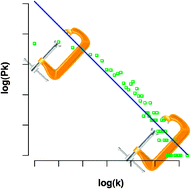For almost 10 years, topological analysis of different large-scale biological networks (metabolic reactions, protein interactions, transcriptional regulation) has been highlighting some recurrent properties: power law distribution of degree, scale-freeness, small world, which have been proposed to confer functional advantages such as robustness to environmental changes and tolerance to random mutations. Stochastic generative models inspired different scenarios to explain the growth of interaction networks during evolution. The power law and the associated properties appeared so ubiquitous in complex networks that they were qualified as “universal laws”. However, these properties are no longer observed when the data are subjected to statistical tests: in most cases, the data do not fit the expected theoretical models, and the cases of good fitting merely result from sampling artefacts or improper data representation. The field of network biology seems to be founded on a series of myths, i.e. widely believed but false ideas. The weaknesses of these foundations should however not be considered as a failure for the entire domain. Network analysis provides a powerful frame for understanding the function and evolution of biological processes, provided it is brought to an appropriate level of description, by focussing on smaller functional modules and establishing the link between their topological properties and their dynamical behaviour.

This article is Open Access
 Please wait while we load your content...
Something went wrong. Try again?
Please wait while we load your content...
Something went wrong. Try again?


 Please wait while we load your content...
Please wait while we load your content...